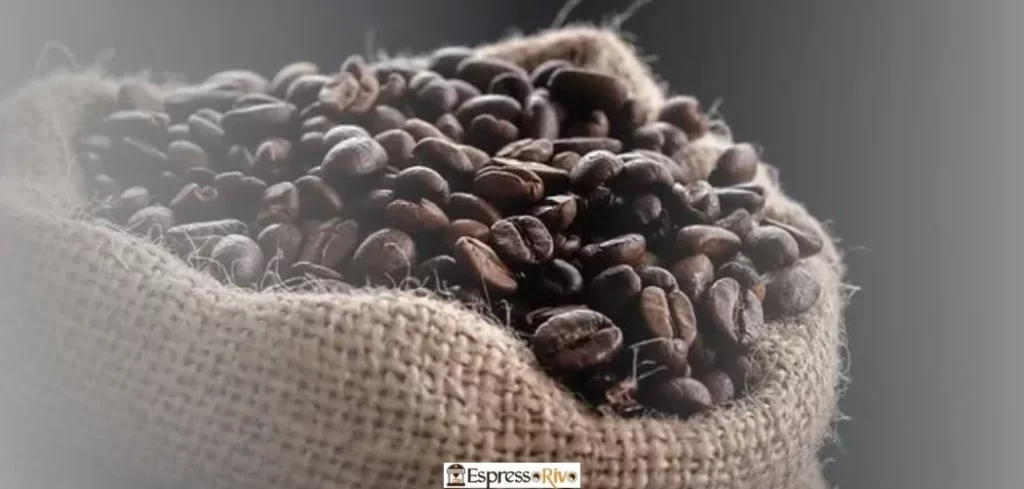Coffee has been a staple in African culture for centuries, and African coffee beans are some of the most highly sought-after in the world. The unique taste and aroma of African coffee can be attributed in large part to the processing methods used to harvest and prepare the beans.
Understanding the various processing techniques used for African coffee beans is crucial for coffee enthusiasts and professionals alike. In this article, we’ll explore the different methods and techniques used to process African coffee beans, including the traditional washed process, the natural process, the honey process, the semi-washed process, and other unique techniques.
By the end of this article, you’ll have a better understanding of how African coffee beans are processed and how these processing methods can affect the final product. Whether you’re a coffee connoisseur, barista, or simply someone who loves a good cup of coffee, this article will give you a deeper appreciation for the art and science of coffee production.
The Traditional Washed Process
The traditional washed process is one of the most common methods used to process coffee beans in Africa. The process involves harvesting ripe coffee cherries and removing the outer layers of skin and fruit pulp to expose the beans. The beans are then fermented in water for a period of time to remove any remaining fruit pulp and to break down the sticky mucilage layer that surrounds the bean.
After fermentation, the beans are washed in clean water to remove any remaining debris and then dried. This can be done either by sun-drying the beans on large patios or by using mechanical dryers. Once the beans are completely dry, the parchment layer is removed to reveal the green coffee beans that are ready for roasting.
The traditional washed process is known for producing clean and bright world of flavored coffee, with a high acidity and a medium body. This method is often used for coffee beans that have a delicate flavor profile, such as those from Ethiopia, Kenya, and Tanzania.
While the traditional washed process can produce high-quality coffee, it can also be time-consuming and labor-intensive, requiring a lot of water and space for fermentation and drying. As a result, some farmers have turned to other processing methods, such as the natural process and the honey process, to reduce costs and increase efficiency.
However, the traditional washed process remains a staple in African coffee production and is beloved by coffee enthusiasts around the world for its unique and delicious flavor profile.
The Natural Process
The natural process, also known as the dry process, is another method of processing African coffee beans. This process is the oldest and most traditional method, which has been used for centuries.
During this process, the coffee cherries are picked and sorted to ensure that only the ripest cherries are selected. Once the selection process is complete, the cherries are spread out in the sun to dry for several weeks. During this time, the cherries are regularly turned to ensure that they dry evenly.
The natural process is popular in regions where water is scarce, and it is also known for producing coffee beans with a unique flavor profile. The cherries’ natural sugars ferment and are absorbed by the beans, giving them a fruity and wine-like flavor. However, this process is also the most unpredictable, as weather conditions and pest infestations can affect the quality of the beans.
While the natural process may produce some of the most flavorful coffee beans, it requires a high level of skill and expertise to ensure that the cherries are properly sorted and dried. If done incorrectly, the beans can develop mold or unwanted flavors, which can ruin the entire batch.
Despite the challenges associated with the natural process, many farmers in Africa continue to use this method due to its cultural and traditional significance. Additionally, there is a growing demand for natural process coffee among specialty coffee shops and enthusiasts, making it an essential part of the African coffee industry.
The Honey Process
The honey process, also known as the pulped natural process, is a relatively new method of processing coffee beans that originated in Central America. It is called the honey process because it involves leaving some of the sticky mucilage or honey-like substance on the coffee bean during the drying process. This process creates a unique flavor profile that lies somewhere between the washed and natural methods.
To start the honey process, the coffee cherries are harvested and then washed to remove any debris. The outer skin of the cherry is then removed, leaving behind the mucilage or sticky layer on the coffee bean. This layer is called the “honey” layer because of its texture and stickiness.
Next, the coffee beans are dried either on raised beds or concrete patios. During the drying process, the coffee beans are turned periodically to ensure even drying and to prevent mold growth. The drying process can take up to 3 weeks depending on the climate and humidity.
Once the beans have reached the desired moisture content, they are then sent to the mill to remove the dried honey layer. The honey layer is removed using a pulping machine, which separates the outer layer of the bean from the inner layer.
The resulting coffee beans have a distinct sweetness and fruity notes that are unique to the honey process. Because this process uses less water than the washed method, it is also more environmentally friendly and sustainable.
The honey process is becoming increasingly popular in African coffee-producing countries such as Ethiopia and Kenya. This method has helped to create a diverse range of flavors that coffee lovers can enjoy.
In the next section, we will explore the hybrid method, a relatively new process that combines elements of both the washed and natural methods.
The Semi-Washed Process
The semi-washed process, also known as the pulped natural process, combines elements of both the washed and natural processes. This method was developed as a way to reduce the amount of water required for washing and to utilize the sweetness of the coffee cherry in the final cup.
The process begins with the coffee cherry being picked, sorted, and de-pulped to remove the outer layer of fruit. However, unlike the washed process, the mucilage is not fully removed from the bean. Instead, the beans are allowed to dry with a small amount of the sticky fruit still attached.
The beans are then carefully monitored during the drying process to ensure that they do not over-ferment or develop any off-flavors. The semi-washed process is more difficult to execute perfectly, but when done correctly, it can produce a coffee that has the clean, bright flavors of a washed coffee with the sweetness and body of a natural coffee.
The semi-washed process is particularly popular in Brazil and has gained popularity in other African countries in recent years. It is well-suited to regions with limited water resources and has the added benefit of reducing waste by using the natural sugars of the coffee cherry.
In terms of flavor, semi-washed coffees can vary widely depending on the specific processing methods used. However, they generally have a sweeter, more complex flavor profile than fully washed coffees and a cleaner taste than natural coffees.
Other Processing Techniques
Aside from the four main processing techniques mentioned above, there are other less common methods used to process coffee beans in Africa. One of these methods is the pulped natural process, which is a hybrid of the washed and natural processes. In this method, the outer skin of the coffee cherry is removed, but the mucilage is left on the bean before drying, resulting in a coffee with a unique flavor profile.
Another method is the wet-hulled process, which is commonly used in Indonesia but is also gaining popularity in some African countries. In this method, the outer skin and some of the fruit flesh are removed before drying, resulting in a coffee with a distinct earthy flavor.
The processing method used for African coffee beans can greatly affect their flavor, acidity, and body. Each method has its unique characteristics, and it’s up to the coffee producer to choose which method is best suited for their specific crop. As a coffee consumer, it’s important to understand the different processing techniques so that you can choose a coffee that matches your taste preferences.
Factors Affecting Processing
Several factors can affect the processing of African coffee beans, including weather, altitude, and the quality of the beans themselves.

Weather plays a significant role in the processing of coffee beans. During the rainy season, it can be challenging to dry the beans properly, which can affect the flavor of the final product. Similarly, if the weather is too hot, the beans can dry too quickly, leading to inconsistent roasting.
Altitude is also a crucial factor. Coffee beans grown at high altitudes tend to have a more complex flavor profile, which is highly sought after by coffee aficionados. However, processing these beans can be more challenging, as the cooler temperatures can slow down the drying process.
Finally, the quality of the beans themselves can affect the processing method used. Higher quality beans may require a more delicate approach, while lower quality beans may benefit from more robust processing techniques to enhance their flavor.
Understanding these factors and how they interact is essential for coffee producers to ensure they are producing the highest quality coffee possible. By carefully selecting the processing method and adjusting it to suit the unique characteristics of each batch of beans, producers can create coffee that truly showcases the distinct flavors and aromas of African coffee beans.
Conclusion
The processing of African coffee beans is a complex and delicate process that greatly affects the taste and quality of the final product. While traditional washed, natural, honey, semi-washed, and other processing techniques all have their own unique characteristics and advantages, the choice of processing method ultimately depends on the specific requirements of the coffee bean and the preferences of the coffee roaster.
Factors such as climate, altitude, soil, and water quality all play a significant role in the processing of African coffee beans. Therefore, it is essential to carefully select the processing method that best suits the characteristics of the beans and the desired flavor profile.
Whether you are a coffee enthusiast or a professional in the coffee industry, understanding the different processing techniques used for African coffee beans can greatly enhance your appreciation and knowledge of this beloved beverage. With a deeper understanding of these techniques, you can better appreciate the nuances and complexities of different coffee varieties and make informed choices when selecting your favorite brew.
Ronsil
Meet Ronsil, the master barista behind EspressoRivo. With years of experience in the coffee industry, he brings a wealth of knowledge and passion to the table. As the owner of a successful coffee shop, Ronsil is a sought-after adviser in the field. His expertise and love for the craft shines through in every cup he serves. We are honored to have him as part of our team at EspressoRivo





